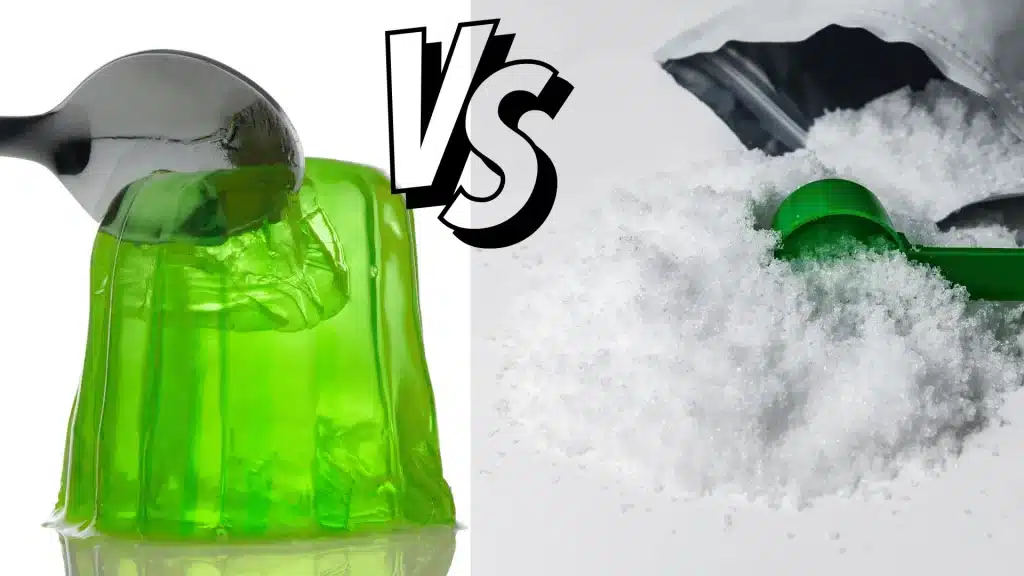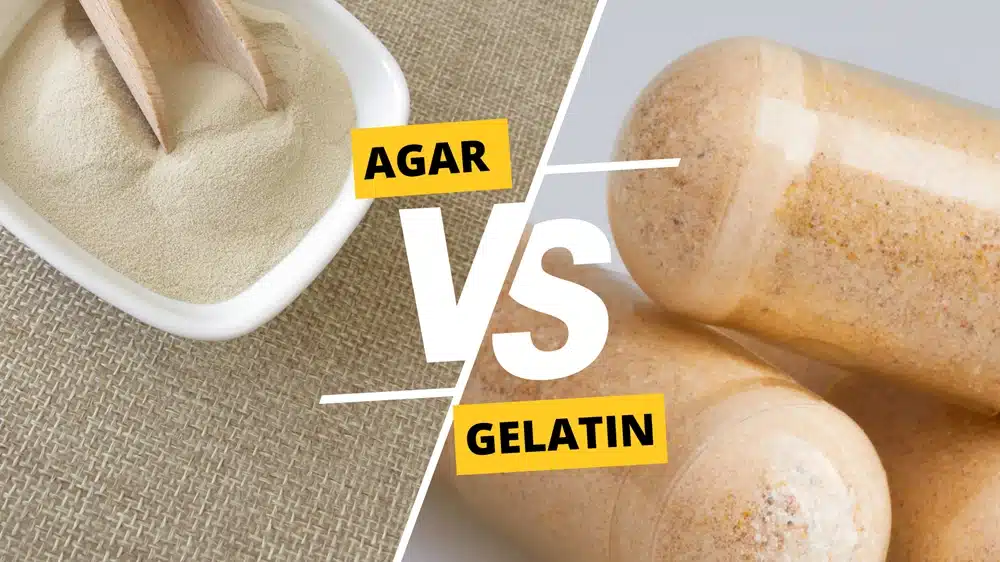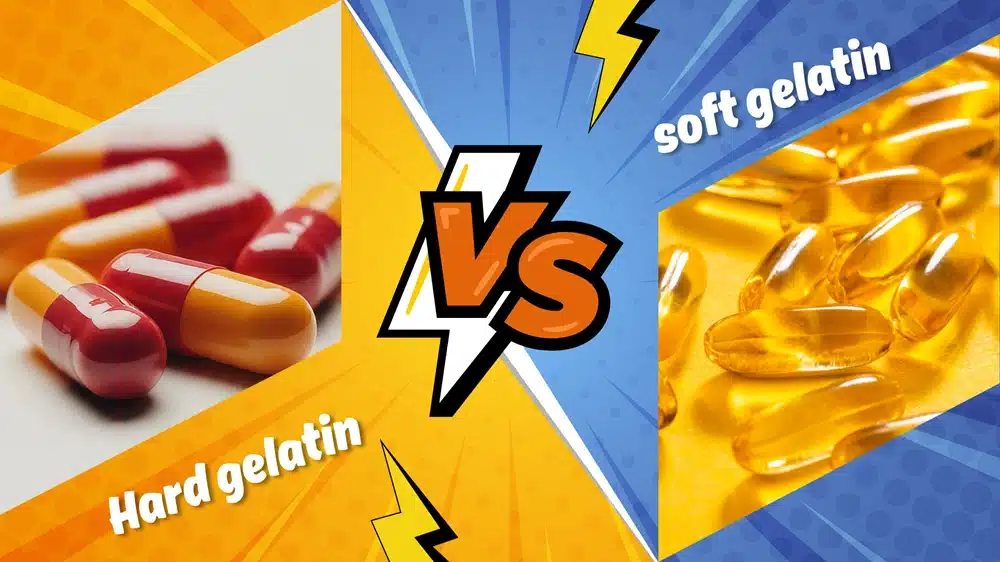Introduction
From the chewy gummies in your candy jar to the soft bread on your sandwich plate and the capsules in your medicine cabinet, two unsung heroes often work behind the scenes: Gelatin and L-Cysteine Hydrochloride. These ingredients, though lesser-known to the average consumer, play critical roles in shaping the texture, shelf life, and functionality of countless products in food, pharmaceuticals, and cosmetics. While gelatin is celebrated for its ability to create jiggly desserts and sturdy capsule shells, L-Cysteine Hydrochloride enhances dough elasticity in baking and serves as a potent antioxidant in medicines. Despite their shared presence in everyday products, their chemical makeup, production methods, applications, and consumer perceptions differ vastly. This article explores these differences in depth, offering a clear, science-based comparison to help you understand their unique contributions to our lives. We’ll dive into their properties, production processes, uses, advantages, limitations, and future trends, all while keeping the discussion accessible for curious readers.
What Are Gelatin and L-Cysteine Hydrochloride?
Gelatin: The Versatile Protein
Gelatin is a natural protein derived from collagen, a structural component found in animal bones, skin, and connective tissues, typically sourced from pigs, cows, or fish. Chemically, gelatin is a complex mixture of polypeptides, rich in amino acids like glycine, proline, and hydroxyproline. Its standout feature is its thermo-reversible nature: it melts into a liquid when heated and solidifies into a gel when cooled. This property makes it ideal for creating the signature bounce in gummy candies or the smooth texture in yogurt. Gelatin is colorless, odorless, and tasteless, blending seamlessly into products. However, its reliance on animal sources makes it unsuitable for vegetarians and raises concerns in religious diets, such as those requiring halal or kosher certification.

L-Cysteine Hydrochloride: The Reactive Amino Acid
L-Cysteine Hydrochloride is the salt form of L-Cysteine, a sulfur-containing amino acid with a reactive thiol group (-SH) that gives it strong reducing properties. It appears as a white, crystalline powder, soluble in water with a slightly acidic taste. Historically extracted from animal hair or feathers, modern L-Cysteine is primarily produced through microbial fermentation, a process that aligns with vegetarian and eco-conscious demands. Its chemical reactivity makes it a powerful tool in specific applications, from strengthening dough in baking to acting as an antioxidant in pharmaceuticals. Unlike gelatin’s broad versatility, L-Cysteine’s role is more specialized but highly effective in targeted uses.
How Are They Made?
Gelatin Production: From Animal to Gel
The production of gelatin begins with animal byproducts—think pigskin, cow bones, or fish scales. These raw materials are cleaned, degreased, and treated with acid or alkali to break down collagen into a soluble form. The mixture is then boiled to extract gelatin, filtered to remove impurities, concentrated, and dried into powder or sheets. This process is resource-intensive, requiring significant water and energy, and raises environmental concerns due to waste byproducts. Ethical issues also arise, as the reliance on animal sources conflicts with vegetarianism and may pose risks of disease transmission, such as bovine spongiform encephalopathy (mad cow disease) in rare cases. Additionally, cultural and religious restrictions, particularly in halal and kosher markets, complicate gelatin’s acceptance.
L-Cysteine Hydrochloride Production: From Hair to Fermentation
In the past, L-Cysteine was extracted by hydrolyzing keratin-rich materials like human hair, pig bristles, or poultry feathers—a method that sparked ethical and cultural backlash. Today, the industry has shifted to microbial fermentation, where genetically engineered bacteria, such as Escherichia coli, synthesize L-Cysteine in controlled bioreactors. Hydrochloric acid is then added to form the stable hydrochloride salt. This method is not only more sustainable but also aligns with vegetarian, halal, and kosher requirements, as it avoids animal-derived raw materials. The transition to fermentation has reduced environmental impact and ethical concerns, though production costs remain higher than traditional methods due to advanced biotechnology.
Applications: Where Do They Shine?
In the Food Industry
Gelatin: Gelatin is a superstar in food manufacturing, lending its gelling, thickening, and stabilizing properties to a wide range of products. It’s the magic behind the chewy texture of gummy bears (e.g., Haribo), the creamy consistency of yogurt, and the smooth mouthfeel of marshmallows. In meat products like sausages or aspics, gelatin provides structural integrity. Its affordability and versatility make it a go-to ingredient, but its animal origin limits its appeal for vegetarians and those adhering to religious dietary laws.
L-Cysteine Hydrochloride: L-Cysteine’s primary role in food is as a dough conditioner, particularly in industrial baking. By reducing disulfide bonds in gluten, it enhances dough elasticity, resulting in softer, more uniform bread, like the sliced loaves found in supermarkets or chains like Subway. It also acts as an antioxidant, extending the shelf life of certain foods by preventing oxidation. While its applications are narrower than gelatin’s, its effectiveness in small quantities and compatibility with vegetarian diets (via fermentation) make it a valuable player in baking.
In Pharmaceuticals and Nutraceuticals
Gelatin: In the pharmaceutical world, gelatin is synonymous with capsules. Soft gelatin capsules (e.g., fish oil or vitamin E) and hard capsules (e.g., antibiotics) rely on gelatin’s biocompatibility and ease of processing. It’s also used in tablet coatings and as a base for some nutritional supplements, like collagen peptides marketed for skin and joint health. However, animal-derived gelatin can trigger allergic reactions in rare cases and faces scrutiny from consumers seeking plant-based alternatives.
L-Cysteine Hydrochloride: L-Cysteine shines in pharmaceuticals as a precursor to drugs like N-acetylcysteine, used to treat acetaminophen overdose or as a mucolytic for respiratory conditions. Its antioxidant properties make it a popular ingredient in dietary supplements, supporting detoxification and cellular health. Unlike gelatin, L-Cysteine’s applications are more chemically driven, but its use requires careful dosing to avoid potential side effects like nausea or gastrointestinal discomfort at high levels.
Beyond Food and Medicine
Gelatin extends its reach into cosmetics, where it’s used in moisturizing face masks and haircare products, and even in niche applications like photographic film emulsions and industrial adhesives. L-Cysteine Hydrochloride finds its way into cosmetics as an anti-aging ingredient, particularly in haircare products that promote strength and shine. It’s also used in animal feed to enhance hair and feather growth in livestock, showcasing its versatility in specialized markets.
Pros and Cons: A Side-by-Side Look
Gelatin
Pros:
- Versatility: Excels in food, pharmaceuticals, and cosmetics, offering unique textural properties.
- Cost-Effective: Relatively inexpensive due to abundant animal raw materials.
- Established Technology: Decades of refined production ensure consistency and scalability.
Cons:
- Animal Origin: Unsuitable for vegetarians and restricted in halal/kosher diets.
- Health Risks: Potential for allergenicity or, in rare cases, disease transmission.
- Environmental Impact: High water and energy use, plus waste from animal processing.
L-Cysteine Hydrochloride
Pros:
- Sustainable Production: Fermentation-based methods are eco-friendly and vegetarian-friendly.
- High Potency: Effective in small quantities, especially in baking and pharmaceuticals.
- Regulatory Ease: Fermentation-derived L-Cysteine easily meets halal/kosher standards.
Cons:
- Limited Scope: Primarily used in baking and specific drugs, less versatile than gelatin.
- Historical Concerns: Past reliance on hair/feather extraction raised ethical issues.
- Higher Costs: Fermentation technology increases production expenses.
Market Trends and Consumer Preferences
Market Dynamics
The global gelatin market, valued at around $4 billion in 2023, continues to grow steadily, driven by demand in food (e.g., confectionery, dairy) and pharmaceuticals (e.g., capsules). However, the rise of plant-based alternatives like agar, pectin, and carrageenan is challenging gelatin’s dominance, particularly in markets with strong vegetarian or religious dietary preferences. The L-Cysteine market, while smaller, is expanding rapidly, with a projected growth rate of over 5% annually, fueled by baking industry needs and pharmaceutical innovations. Advances in fermentation technology are making L-Cysteine more accessible and cost-competitive.
Consumer Shifts
Growing awareness of sustainability and ethical sourcing is reshaping consumer preferences. Vegetarians, vegans, and environmentally conscious consumers are pushing for plant-based or sustainably produced ingredients, putting pressure on gelatin manufacturers to explore alternatives like microbial or plant-derived gels. Meanwhile, L-Cysteine’s shift to fermentation has made it a darling of the clean-label movement, appealing to those seeking vegetarian, halal, or kosher products. Social media platforms like X highlight this trend, with users frequently discussing plant-based diets and sustainable food production.
Regulatory Landscape
Gelatin must comply with stringent food and pharmaceutical regulations, such as those set by the FDA and EU, and faces complex certification processes for halal and kosher markets. L-Cysteine, particularly when fermentation-derived, navigates these regulations more easily, as it avoids animal-derived concerns. Both ingredients must meet high purity and safety standards, but L-Cysteine’s modern production methods give it an edge in regulatory compliance.
Real-World Examples
- Gelatin: Haribo’s iconic gummy bears owe their chewy texture to gelatin, as do yogurt brands like Chobani for their creamy consistency. In pharmaceuticals, Pfizer’s fish oil capsules rely on gelatin shells for encapsulation.
- L-Cysteine Hydrochloride: Industrial bakeries like those supplying Subway use L-Cysteine to produce soft, uniform sandwich bread. In medicine, N-acetylcysteine drugs, used for overdose treatment, leverage L-Cysteine’s antioxidant power.
The Future of Gelatin and L-Cysteine
Gelatin’s Path Forward
The future of gelatin lies in addressing its limitations. Research into plant-based alternatives, such as seaweed-derived alginates or microbial gels, is accelerating, driven by consumer demand for vegetarian and sustainable options. Innovations in sustainable production, like recycling collagen from food industry byproducts, could reduce environmental impact. However, gelatin’s low cost and versatility ensure it will remain a staple in many applications, even as alternatives gain ground.
L-Cysteine’s Rising Star
L-Cysteine Hydrochloride is poised for growth, thanks to improvements in fermentation technology that lower costs and enhance scalability. Its applications in pharmaceuticals are expanding, with research exploring its potential in anti-aging supplements and novel drug formulations. In cosmetics, L-Cysteine is gaining traction for its role in hair and skin health, capitalizing on the clean beauty trend. As sustainability becomes a priority, L-Cysteine’s eco-friendly production gives it a competitive edge.
Conclusion
Gelatin and L-Cysteine Hydrochloride are indispensable ingredients that shape the foods we eat, the medicines we take, and even the cosmetics we use. Gelatin’s versatility and affordability make it a powerhouse in creating textures and structures, from gummies to capsules, but its animal origin and environmental footprint pose challenges. L-Cysteine Hydrochloride, with its targeted functionality and sustainable production, excels in baking and pharmaceuticals, offering a vegetarian-friendly alternative with growing appeal. As consumer preferences shift toward sustainability and ethical sourcing, L-Cysteine’s fermentation-based production positions it for a bright future, while gelatin faces pressure to innovate with plant-based alternatives. Whether you’re biting into a chewy candy or swallowing a life-saving pill, these ingredients are quietly at work, making our lives tastier, healthier, and more convenient. The choice between them depends on the task at hand—gelatin for texture, L-Cysteine for precision—and the values of the consumers they serve.
What are Gelatin and L-Cysteine Hydrochloride used for?
Gelatin: Used to create chewy textures in gummies, yogurt, and marshmallows, and as capsule shells in pharmaceuticals. It’s also found in cosmetics like face masks.
L-Cysteine Hydrochloride: Used as a dough conditioner in bread and pasta to improve elasticity, and as an antioxidant in medicines like N-acetylcysteine for drug overdose treatment.
Are Gelatin and L-Cysteine Hydrochloride vegetarian-friendly?
Gelatin: No, it’s derived from animal collagen (e.g., pig, cow, or fish), making it unsuitable for vegetarians or vegans.
L-Cysteine Hydrochloride: Yes, when produced via modern microbial fermentation, it’s vegetarian and vegan-friendly, unlike older methods using animal hair or feathers.
How are Gelatin and L-Cysteine Hydrochloride produced?
Gelatin: Made by extracting collagen from animal bones, skin, or scales through boiling, acid/alkali treatment, and drying.
L-Cysteine Hydrochloride: Traditionally extracted from hair or feathers, but now primarily produced through eco-friendly microbial fermentation.
Are there religious dietary restrictions for these ingredients?
Gelatin: Often not halal or kosher unless specifically certified, due to its animal origins (e.g., pork).
L-Cysteine Hydrochloride: Fermentation-derived versions are typically halal and kosher, making them more accessible for religious diets.
What are the health risks of Gelatin vs. L-Cysteine Hydrochloride?
Gelatin: Rare risk of allergic reactions or disease transmission (e.g., mad cow disease) from animal sources. Generally safe when processed properly.
L-Cysteine Hydrochloride: Safe in small amounts (e.g., in food), but high doses in supplements may cause side effects like nausea or digestive issues.
Which is more environmentally friendly?
Gelatin: Less eco-friendly due to high water and energy use in production and reliance on animal farming, which has environmental impacts.
L-Cysteine Hydrochloride: More sustainable when produced via fermentation, reducing reliance on animal materials and waste.
Can Gelatin and L-Cysteine Hydrochloride be used interchangeably?
No, they serve different purposes. Gelatin is a gelling agent for texture, while L-Cysteine is a dough conditioner or antioxidant, with distinct chemical roles.
Why is L-Cysteine Hydrochloride used in bread but not Gelatin?
L-Cysteine strengthens gluten in dough, improving bread’s texture and elasticity. Gelatin doesn’t have this chemical effect and is better suited for gelling in desserts.
Are there alternatives to Gelatin and L-Cysteine Hydrochloride?
Gelatin Alternatives: Plant-based options like agar, pectin, or carrageenan for gelling in food and vegan capsules in pharmaceuticals.
L-Cysteine Alternatives: Other dough conditioners like ascorbic acid or enzymes, though less common in industrial baking.
Which is more cost-effective for manufacturers?
Gelatin: Generally cheaper due to abundant animal raw materials and established production processes.
L-Cysteine Hydrochloride: More expensive due to advanced fermentation technology, but effective in small quantities, balancing costs in specific applications.
How do consumer trends affect Gelatin vs. L-Cysteine Hydrochloride?
Growing demand for vegetarian and sustainable products favors fermentation-based L-Cysteine. Gelatin faces challenges due to animal sourcing, prompting plant-based alternatives.
Are Gelatin and L-Cysteine Hydrochloride safe for daily consumption?
Both are safe when used within regulatory limits. Gelatin is a common food ingredient, and L-Cysteine is used in trace amounts in baking, posing minimal risk.
Gelatin vs L-Cysteine Hydrochloride Detailed Comparison
| Comparison Item | Gelatin | L-Cysteine Hydrochloride |
|---|---|---|
| Chemical Properties | ||
| Molecular Type | Protein macromolecule | Amino acid small molecule |
| Molecular Weight | 15,000-250,000 Da | 175.63 g/mol |
| Chemical Formula | Complex protein polymer | C₃H₇NO₂S·HCl |
| Structural Features | Triple helix collagen structure | Sulfur-containing amino acid with thiol group (-SH) |
| Source & Production | ||
| Primary Source | Animal bones, skin, connective tissues | Synthetic production or microbial fermentation |
| Production Method | Collagen hydrolysis extraction | Chemical synthesis or biological fermentation |
| Purity | Food grade, pharmaceutical grade | High purity chemical reagent |
| Physical Properties | ||
| Appearance | Colorless to pale yellow sheets or powder | White crystalline powder |
| Solubility | Dissolves in hot water, swells in cold water | Readily soluble in water |
| Gel Properties | Thermoreversible gel formation | No gel formation |
| Stability | Heat sensitive, unstable to acids/bases | Relatively stable, prone to oxidation |
| Functional Properties | ||
| Primary Function | Gelling agent, thickener, stabilizer | Dough conditioner, antioxidant |
| Mechanism of Action | Forms three-dimensional network structure | Breaks gluten disulfide bonds, forms new bonds |
| Effect on Dough | Increases viscosity and elasticity | Reduces dough elasticity, improves extensibility |
| Applications | ||
| Food Industry | Confectionery, jellies, yogurt, meat products | Bread, biscuits, noodle products |
| Pharmaceutical | Capsule shells, tablet coatings | Dietary supplements, drug synthesis intermediates |
| Other Applications | Cosmetics, photographic films | Cosmetics, biotechnology |
| Usage Characteristics | ||
| Typical Dosage | Usually 0.5-2% | Usually 0.01-0.05% |
| Addition Method | Requires pre-swelling or dissolution | Direct addition or pre-dissolution |
| Effect Manifestation | Forms gel upon cooling | Acts during mixing process |
| Safety & Regulations | ||
| Safety Status | GRAS certified, high safety profile | GRAS certified, dosage control required |
| Allergenicity | May cause allergic reactions | Generally non-allergenic |
| Religious Restrictions | Animal-derived, religious restrictions apply | Synthetic, no religious restrictions |
| Economic Factors | ||
| Cost | Moderate to high cost | Higher cost per unit weight |
| Market Availability | Widely available globally | Specialized suppliers |
| Storage Requirements | Cool, dry place, away from moisture | Cool, dry place, protected from light and air |



